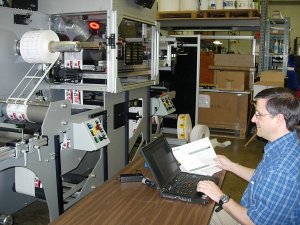May 25 2010
Nanomaterials engineers seeking to use rapidly advancing laser die cutting technology for nanomaterials product innovations can now determine if the materials they use can be handled by modern laser die cutting technology by sending samples for engineering studies and analyses to the new Spartanics Laser Cutting Applications Laboratory for Materials Research.

Spartanics laser die cutting applications engineers have extensively tested laser die cutters with varying laser strengths and software configurations with a wide range of materials including: plastic films; polyesters; polycarbonates; foams; textiles; paper; adhesive tapes; non-wovens, wood, laminates, pressure-sensitive substrates, magnetic materials, polypropylene, polymides, abrasives, rubber, among others. Formalization of the Applications Laboratory signals Spartanics intent to systematize this growing knowledgebase for cross-industry access.
The Spartanics Laser Die Cutting Applications Laboratory for Materials Research provides no-cost detailed engineering analyses of maximum material thicknesses that can be handled with these different substrates, including brand name materials, correlated to laser power and other variables.
To arrange for a no-cost materials analysis of suitability for finishing, marking and other detailing with laser die cutting, contact Mike Bacon, Spartanics VP, at [email protected].
Paul Dirienzo, Spartanics Director of Engineering explains that the formalization of the Spartanics Laser Die Cutting Applications Laboratory for Materials Research is a natural outgrowth of the ongoing R&D investments Spartanics has made in advancing laser die cutting technology. Dirienzo comments, “The explosion in new materials with different properties-- tensile strengths, toughness, resilience, etc.---has been especially pronounced in the last decade. During this same time period, laser die cutting technology, largely due to more sophisticated software engineering, continues to evolve at such a rapid pace that the conclusions one might make today about whether a certain plastic, non-woven, or even nanomaterial can be adequately handled by digital die cutting is likely not going to be the same in just a few years. Spartanics has opened this Laser Die Cutting Applications Laboratory for Materials Research to facilitate the systematic study of match-up between laser die cutting and materials—both long-established brand names and newer material innovations. We will also be publishing these studies in the future in some manner, to be announced, and partnering with the major materials suppliers around the world to create a knowledgebase that will become a standard reference across industries.”
Spartanics Finecut Laser Die Cutting Systems --sheet, roll or combination sheet/roll-- are used in a wide array of applications --- flexible circuits, membrane switches, gaskets, labels, cardstock and paperboard products, packaging, automotive and medical device components, discs, belts, and gaskets, novelty magnets, RFID tags, P-O-P display products, industrial textile applications, and more.
Sales inquiries can be directed to [email protected], +847-394-5700.